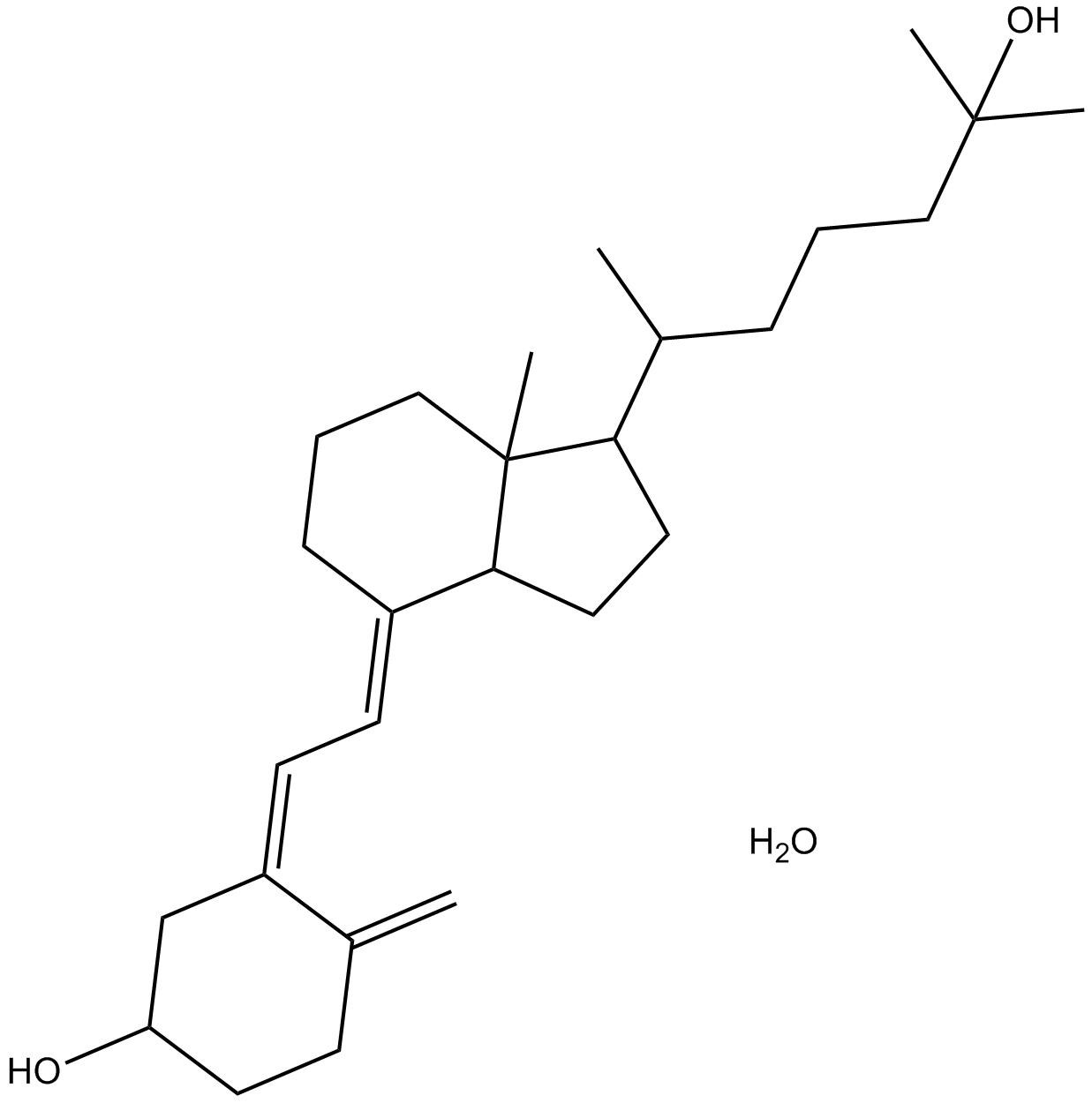Calcifediol monohydrate |
| Catalog No.GC16720 |
Products are for research use only. Not for human use. We do not sell to patients.

Cas No.: 63283-36-3
Sample solution is provided at 25 µL, 10mM.
Calcifediol is a prehormone that is produced in the liver by hydroxylation of vitamin D3 (cholecalciferol) and is the best indicator of total vitamin D exposure [1].
The main circulating form of vitamin D, higher serum levels of calcifediol is associated with lower incidence rates of colon, breast, ovarian, renal, pancreatic, aggressive prostate and other cancers [2].
In bovine parathyroid cells, Calcifediol can reduce parathyroid hormone (PTH) secretion and mRNA synthesis [3]. In T-47D breast cancer cells, calcifediol mediated activation of VDR (the vitamin D receptor), which was associated with endocytosis of DBP (vitamin D binding protein). So T-47D breast cancer cells can rapidly internalize DBP [4].
In the pooled study included 616 colorectal adenoma cases and 770 controls, the association between circulating 25(OH)D3 and colorectal adenoma risk was estimated through multivariable logistic regression. The higher circulating 25(OH)D3 concentrations were significantly associated with lower colorectal adenoma risk [1].
References:
[1]. Fedirko V, Bostick RM, Goodman M, et al. Blood 25-hydroxyvitamin D3 concentrations and incident sporadic colorectal adenoma risk: a pooled case-control study. Am J Epidemiol, 2010, 172(5): 489-500.
[2]. Garland CF, Gorham ED, Mohr SB, et al. Vitamin D for cancer prevention: global perspective. Ann Epidemiol, 2009, 19(7): 468-483.
[3]. Ritter CS, Armbrecht HJ, Slatopolsky E, et al. 25-Hydroxyvitamin D(3) suppresses PTH synthesis and secretion by bovine parathyroid cells. Kidney Int, 2006, 70(4): 654-659.
[4]. Rowling MJ, Kemmis CM, Taffany DA, et al. Megalin-mediated endocytosis of vitamin D binding protein correlates with 25-hydroxycholecalciferol actions in human mammary cells. J Nutr, 2006, 36(11): 2754-2759.
Average Rating: 5 (Based on Reviews and 30 reference(s) in Google Scholar.)
GLPBIO products are for RESEARCH USE ONLY. Please make sure your review or question is research based.
Required fields are marked with *




















